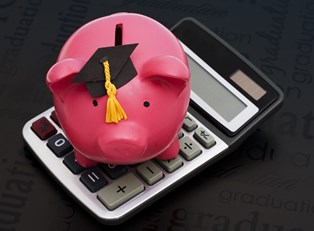You’ve probably heard of student loans before—but have you heard of student loan forgiveness? Student loans are loans that college students take out to pay for their college tuition.
Student loans are classified as subsidized or unsubsidized. Unsubsidized loans gather interest while the student is still in school, so they’re most people pay them back first. Subsidized loans begin collecting interest after the student graduates from college, so most students wait until a little longer to pay those loans back. The sooner a student can pay back a loan that’s already accruing interest, the better.
Student Loan Forgiveness
Student loan forgiveness is a way to lessen or get rid of federal student loans without actually paying them. Crazy, right? Crazy good, if you’re a poor college graduate. This probably sounds too good to be true, and in a way, it is. It’s not like they forgive all of your loans immediately with no stipulations, and if you have federal student loans, you will have to pay some of them back. However, if you qualify, you won’t have to pay all of them back in full.
Public Service Loan Forgiveness is a program that allows a portion of a graduate’s loan debt to be dissolved. To qualify for this program, you must have paid at least 120 payments in at least 10 years on your loan and be employed full time in a public service or nonprofit job. Basically, you have to work in a qualifying career and have a good loan payment history.
Income Based Repayment
Whether or not you qualify for Public Service Loan Forgiveness, you may be able to make affordable loan payments with an income-driven repayment plan. The federal government has three income-driven loan repayment plans available:
- Income-Based
- Pay As You Earn
- Income-Contingent
With these plans, your monthly loan payments are adjusted according to the amount of money you make. The repayment period for these plans is 20 to 25 years, depending on the plan. At the end of that time, you will have either paid off your loan or the federal government will forgive the rest of the money you owe.
If you qualify for Public Service Loan Forgiveness, you can pay back your loans under one of these plans, but the repayment period is shorter. Instead of having to wait 20 or 25 years for your debt to be forgiven, you only have to wait 10 years. With these programs, you have the loan hanging over your head for less time, and you don’t have to pay as much money as you would with the traditional repayment plan.



